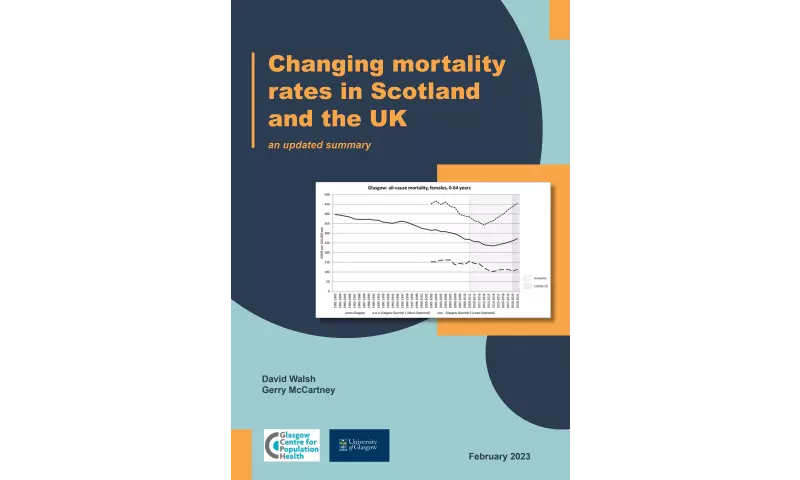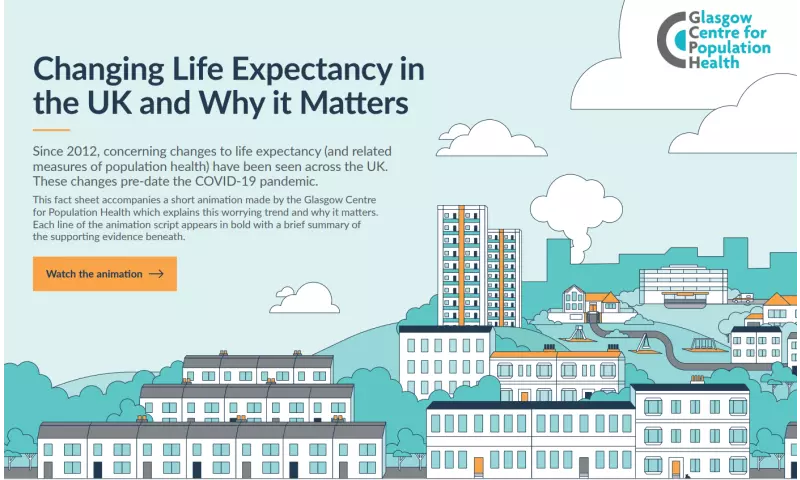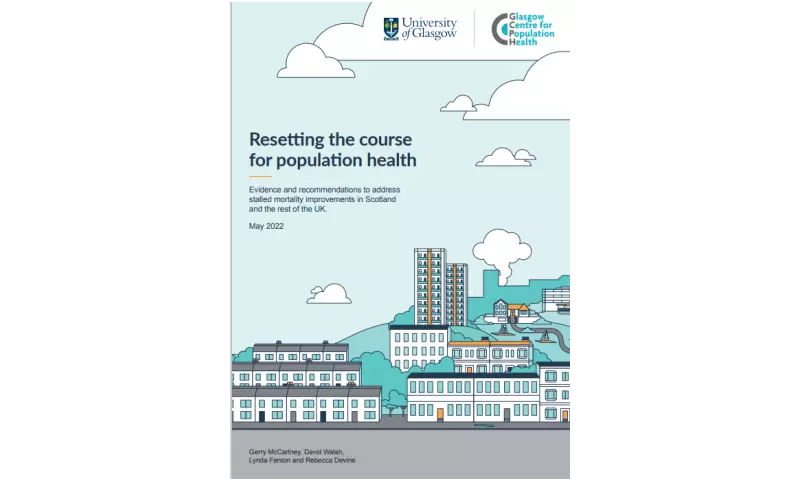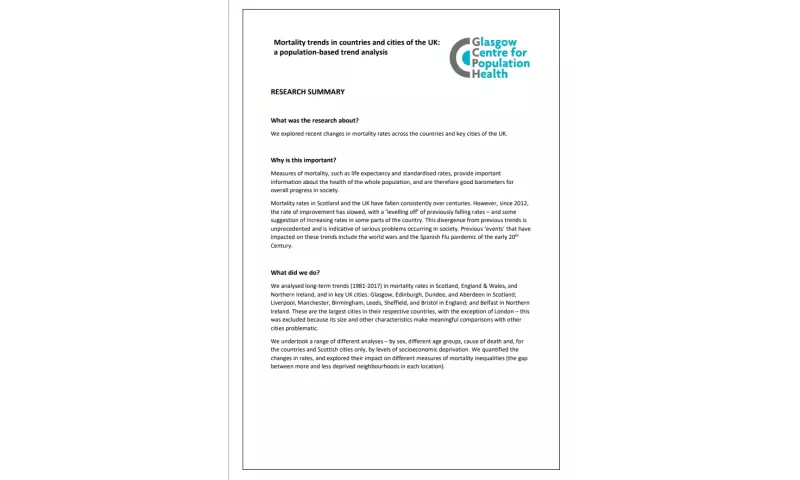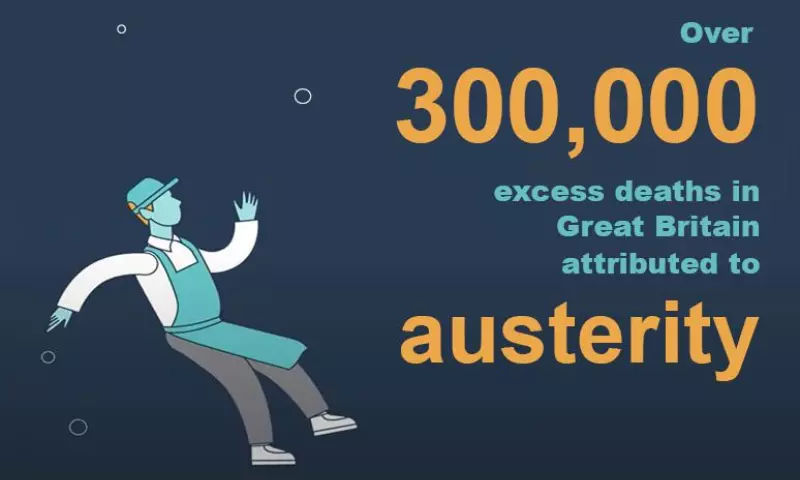Changing life expectancy
Inequalities, Poverty
May 2022 - Ongoing
Mortality rates, and related indicators such as life expectancy, are important markers of the overall health of a population.
We, and others, have previously reported the profound and deeply concerning changes to these indicators that have been seen in Scotland, and across the UK, since around 2012: a stalling in mortality improvements overall, increasing death rates among the most deprived communities, and a widening in inequalities.
 Project objectives
Project objectives
- To synthesise the changes to mortality rates and life expectancy in Scotland and across the UK.
- To investigate and produce evidence on the most likely contributory causes.
- To make a series of recommendations, based on evidence, to address the trends.
- Through this evidence, to increase understanding and awareness of the magnitude of the changes, the causes, and the need for urgent action.
 What is involved
What is involved
In May 2022, we published a joint report with the University of Glasgow, to present detailed analysis and evidence of the mortality changes that have occurred in Scotland and across the UK; critically appraise the range of hypotheses that have been suggested as possible contributory factors; report the most likely contributory cause(s); and make a series of recommendations for action at different levels.
We also created a three-minute animation to raise awareness of the worrying changes and why they matter so much. An accompanying factsheet set out the supporting evidence for each line of the animation script.
In October 2022, further analysis was published in the Journal of Epidemiology and Community Health. This investigated whether the mortality impact of austerity – in terms of when rates changed and the scale of excess deaths – was worse for women compared to men (as such policies were thought to disproportionately affect women in terms of greater financial impact and loss of services). This analysis also quantified the scale of the ‘excess’ deaths observed across Scotland, England and Wales between 2012 and 2019.
In February 2023, we produced an updated briefing, to summarise the additional research that has been published on the changes since our May 2022 publication. It also updated the previously published mortality analyses with the most recent figures available to cover the period prior to the COVID-19 pandemic (i.e., up to the end of 2019); and the two years of the pandemic (i.e., up to the end of 2021).
 Findings & outcomes
Findings & outcomes
- Life expectancy trends have improved consistently for more than a century – reflecting better living conditions, public health interventions and medical advances. The only exceptions being times of major crisis such as war and pandemics. But in the UK, ten years ago, improvement stopped overall, and rates actually reversed in poorer areas – in other words people started dying younger, and in greater numbers.
- These changes have been seen for men and women, almost all age groups, and for almost all causes of death. Other countries’ life expectancy rates have continued to improve.
- There have been dramatic changes to premature mortality rates (under 65 years) in all parts of Scotland, and across the UK.
- Compared to what previous trends predicted, an additional 335,000 deaths were observed across Scotland, England and Wales between 2012 and 2019. In Scotland, this amounted to 20,000 excess deaths.
- A wealth of evidence – both international and from the UK – has attributed these changes to UK Government austerity measures which have cut billions of pounds from public services and social security, having a devastating impact on the health of the poorest and the most vulnerable in society.
- Behind these overall mortality trends, we have seen adverse impacts on mental health, healthy life expectancy and particular causes of death such as those related to drug use.
- These trends pre-date the COVID-19 pandemic, but that, the cost-of-living crisis, and continued austerity, mean future trends are unlikely to improve.
- We urgently need responses in Scotland, especially to protect the poorest and most vulnerable.
Changing life expectancy in the UK and why it matters (animation)
Changing life expectancy in Scotland and the UK (presentation)
 Further resources & reading
Further resources & reading
Social security cuts and life expectancy: a longitudinal analysis of local authorities in England, Scotland, and Wales. Seaman R, Walsh D, Beatty C, McCartney G, Dundas R. Journal of Epidemiology & Community Health 2023.
How important is it to avoid indices of deprivation that include health variables in analyses of health inequalities? McCartney G, Hoggett R, Walsh D, Lee D. Public Health 2023; 221: 175-80
How much of the stalled mortality trends in Scotland and England can be attributed to obesity? Walsh D, Tod E, McCartney G, et al. BMJ Open 2022;12:e067310. doi:10.1136/ bmjopen-2022-067310
Bearing the burden of austerity: how do changing mortality rates in the UK compare between men and women? Walsh D, Dundas R, McCartney G, Gibson M, Seaman R. Journal of Epidemiology & Community Health 2022; 76: 1027-1033
Is austerity a cause of slower improvements in mortality in high-income countries? A panel analysis. McCartney G, McMaster R, Popham F, Dundas R, Walsh D. Social Science & Medicine, Volume 313, 2022. doi.org/10.1016/j.socscimed.2022.115397
Trends in healthy life expectancy in the age of austerity. Walsh D, Wyper G, McCartney G. Journal of Epidemiology & Community Health 2022; 76: 743-745
Excess mortality in Glasgow: further evidence of ‘political effects’ on population health. Schofield L, Walsh D, Bendel N, Piroddi R. Public Health 2021; 201: 61-68
Deaths from ‘diseases of despair’ in Britain: comparing suicide, alcohol-, and drug-related mortality for birth cohorts in Scotland, England & Wales, and selected cities. Walsh D, McCartney G, Minton J, Parkinson J, Shipton D, Whyte B. Journal of Epidemiology & Community Health 2021; 75: 1195-1201
Spatial and temporal inequalities in mortality in the USA, 1968-2016 Wami W, Walsh D, Hennig B D, McCartney G, Dorling D, Galea S, Sampson L, Dundas R. Health & Place 2021; 70: 102586.
Scaling COVID-19 against inequalities: should the policy response consistently match the mortality challenge? McCartney G, Leyland A H, Walsh D, Dundas R. Journal of Epidemiology & Community Health 2021;75:315-320.
Can Scotland achieve its aim of narrowing health inequalities in a post-pandemic world? Walsh D, Lowther M, McCartney G, Reid K. Public Health in Practice 2020; 1: 100042.
Changing mortality trends in countries and cities of the United Kingdom (UK): a population-based trend analysis Walsh D, McCartney G, Minton J, Parkinson J, Shipton D, Whyte B. BMJ Open 2020
Theory driven analysis of social class and health outcomes using UK nationally representative longitudinal data Wami W, McCartney G, Bartley M, Buchanan D, Dundas R, Katikireddi S V, Mitchell R, Walsh D. International Journal for Equity in Health 2020; 19: 193.
Does ethnic diversity explain intra-UK variation in mortality? A longitudinal cohort study. Schofield L, Walsh D, Feng Z, et al. BMJ Open 2019; 9: e024563.
History, politics and vulnerability: explaining excess mortality in Scotland and Glasgow. Walsh D, McCartney G, Collins C, et al. Public Health 2017;151:1-12.
How do trends in mortality inequalities by deprivation and education in Scotland and England & Wales compare? A repeat cross-sectional study. McCartney G, Popham F, Katikireddi SV, et al. BMJ Open 2017. DOI: 10.1136/bmjopen-2017-017590.
Do differences in religious affiliation explain high levels of excess mortality in the UK? Ralston K, Walsh D, Feng Z, et al. Journal of Epidemiology & Community Health 2017. DOI: 10.1136/jech-2016-208176
Dying younger in Scotland: trends in mortality and deprivation relative to England and Wales, 1981-2011. Schofield L, Walsh D, Munoz-Arroyo R, et al. Health & Place 2016;40:106-115.
Explaining the excess mortality in Scotland compared with England: pooling of 18 cohort studies. McCartney G, Russ TC, Walsh D, et al. Journal of Epidemiology & Community Health 2015;69(1):20-7.
Is ‘excess’ mortality in Glasgow an artefact of measurement? Stanners G, Walsh D, McCartney G. Journal of Public Health 2015. DOI: 10.1016/j.puhe.2015.02.032
Why do males in Scotland die younger than those in England? Evidence from three prospective cohort studies. McCartney G, Shipley M, Hart C, et al. PLoS ONE 2012;7(7):e38860.
Why the Scots die younger: Synthesizing the evidence. McCartney G, Collins C, Walsh D, et al. Public Health 2012126(6):459-470. DOI:10.1016/j.puhe.2012.03.007

